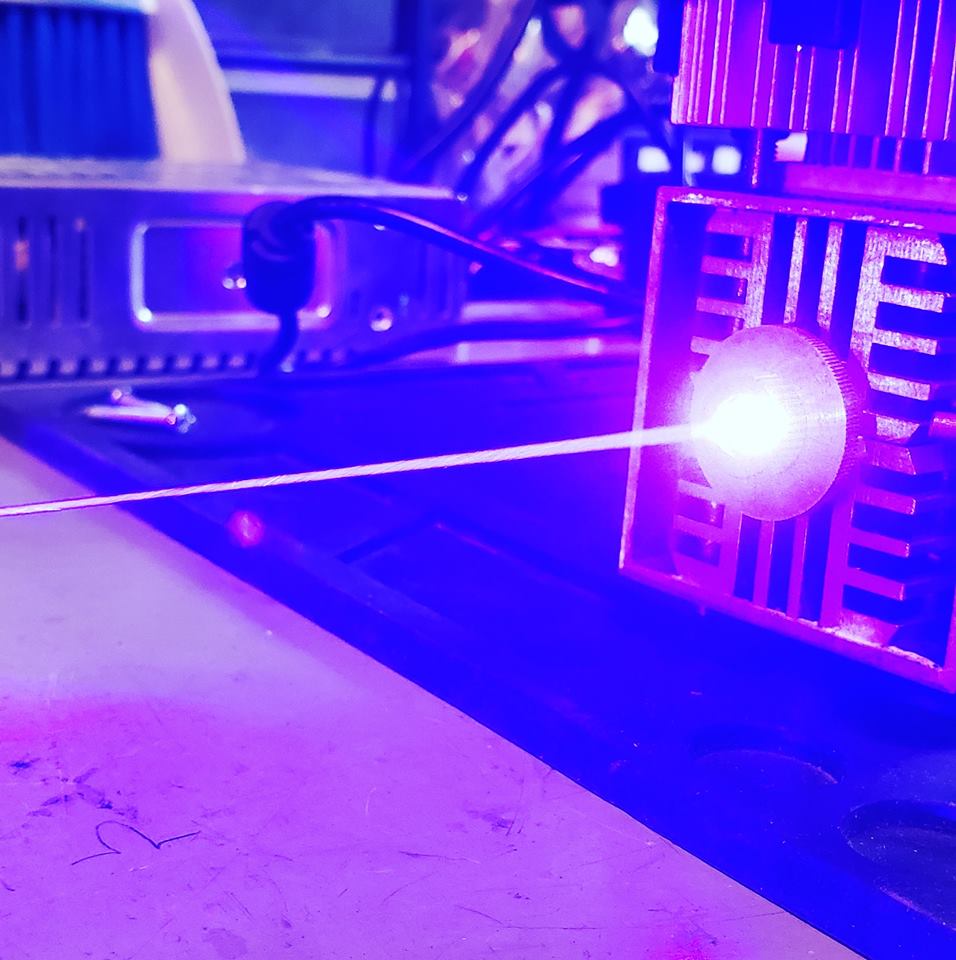There is a very fine line between diode laser or Co2 laser. Over the past years and even today, 3D Printer makers, enthusiasts and small businesses have been struggling to determine which machine best meets their needs. This article therefore aims to give an overview of these technologies on the one hand, on the other hand, it will discuss the reasons why one or another perfectly suits the activities of the aforementioned groups.

Advantages and disadvantages of Co2 lasers
One big advantage of Co2 lasers is that they usually are big raw laser power. The minimum tube that you can find on the market is at least 25 watt and most Co2 machines have 40-80-watt power output. Professional and industrial units mostly have up to 150 watts. The industrial units can reach 400 watts.
Another key advantage of this technology is the fact that its power is suitable for fast laser cutting. Therefore, Co2 is therefore the ideal choice for whoever needs a laser for an industrial production need.
As far as limitations are concerned…
It should be noted that all Co2 lasers work on a certain wavelength 10,6 uM with is at least 15-20 times longer than a visible light spectrum. However, FAR infrared spectrum does not work for all materials, for example it cuts great glass and transparent plexiglass but with this wavelength, it is not possible to engrave on metals without special paste like Cermark (which is quite expensive).
A key problem of Co2 laser machines – is their size. All of them are very big and bulky. The thing is that Co2 tube requires a lot of space which enthusiasts and do not have since they are working in a garage. More power => longer tube => bigger size. However, the size does not really matter when the user deals with an industrial machine.
Another thing that needs to be taken into account is that the mirror systems for Co2 lasers are quite fragile and does not like to be transported a lot. It means that the laser machine is not very much transportable. In addition, with big weight of the machine it makes hard to import and export plus shipping costs are extremely high.
Main features of diode lasers & Co2 tubes
Diode lasers features:
- Portable and light in terms of weight (hundred grams with a heatsink).
- Can be installed on any frame (compatible with GRBL, Reprap, Arduino, etc.).
- Less powerful (no single diode can do more than 10-watt optical power).
- Can be easily shipped almost anywhere without a risk of being damaged.
- Does not require complicated power system (requires stabilized current and voltage).
- Have wide spectrum of wavelength 405-1080 nm.
- Can be relatively easy fiber coupled.
- Have long lifespan (if the diode is not working nothing really happens to him).
Co2 tubes features:
- More powerful (can reach 400 watts).
- Very fragile (glass tubes can be damaged easily).
- Requires complicated mirror system to aim the beam (to aim the laser beam you need to use special mirrors to transport the laser beam).
- Can degraded within a few month (low quality tubes have high diffusion rate what makes them useless within 6-12 month).
- Very hard to be fiber coupled (require special PIR fiber to get laser radiation into the fiber).
- Have limited wavelength 10.6 uM (10600 nm) (does not work for metal etching without special paste).
- Non-visible radiation (far infrared) from the Co2 laser makes it riskier to operate in the open system
In a nutshell
Diode lasers seem to be the ideal option while taking into account space-related issues.
Endurance Lasers CEO, George Fomitchev concludes: “In general, it is quite obvious that if you are limited with your working space and you do not need to cut something 24/7 and do not need to cut very thick materials like 10 mm plywood or wood, then diode laser is the best option.
A lot of people and customers prefer diode lasers over Co2 machines because of an extra space. Unlike the diode laser you cannot install a Co2 tube on a CNC machine or 3D printer without a very complicate mirror system and without a perfect enclosure it might be extremely dangerous.”
Simply put, with a diode laser you can have a 3D printer + laser cutter + laser engraver. Or if you install the diode laser on a CNC machine with a spindle it will allow you to curve, cut and etch.
You can now post free of charge job opportunities in the AM Industry on 3D ADEPT Media.
For further information about 3D Printing, follow us on our social networks and subscribe to our newsletter : Facebook, Twitter, LinkedIn & Instagram !
Would you like to be featured in the next issue of our digital magazine? Send us an email at contact@3dadept.com
https://pagead2.googlesyndication.com/pagead/js/adsbygoogle.js
(adsbygoogle = window.adsbygoogle || []).push({});





